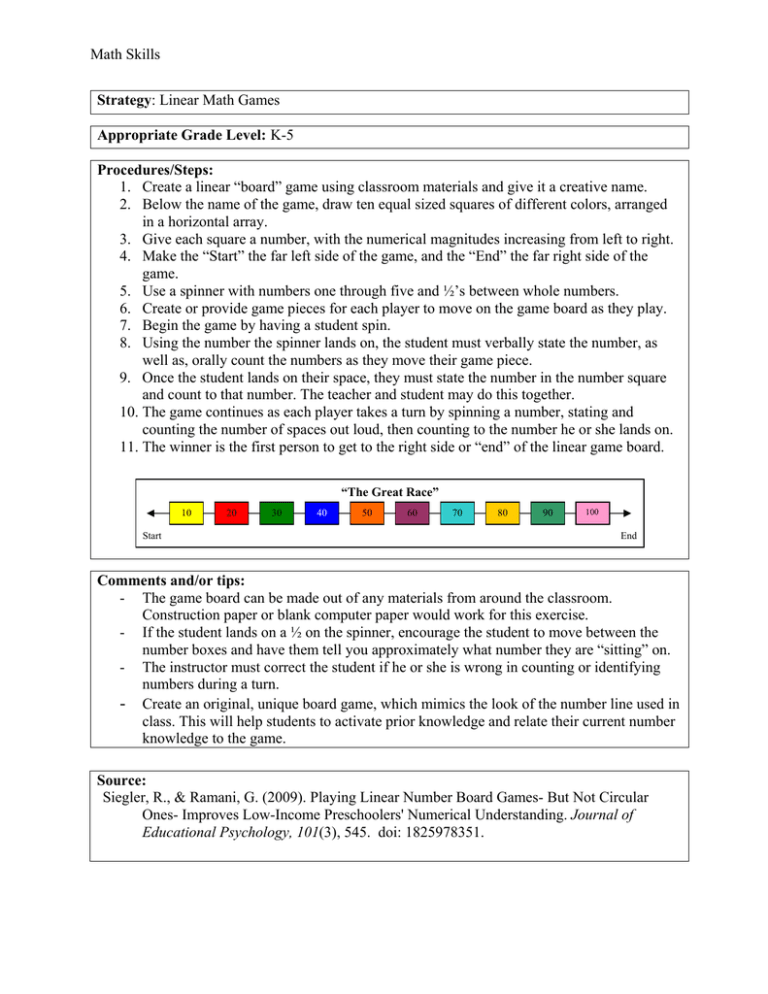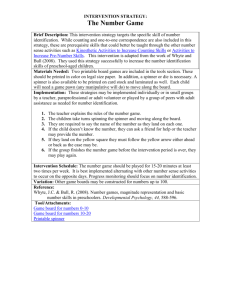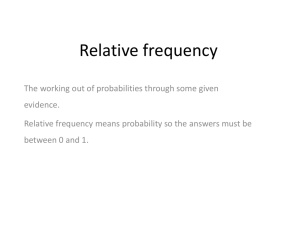Document 14628457
advertisement

Math Skills Strategy: Linear Math Games Appropriate Grade Level: K-5 Procedures/Steps: 1. Create a linear “board” game using classroom materials and give it a creative name. 2. Below the name of the game, draw ten equal sized squares of different colors, arranged in a horizontal array. 3. Give each square a number, with the numerical magnitudes increasing from left to right. 4. Make the “Start” the far left side of the game, and the “End” the far right side of the game. 5. Use a spinner with numbers one through five and ½’s between whole numbers. 6. Create or provide game pieces for each player to move on the game board as they play. 7. Begin the game by having a student spin. 8. Using the number the spinner lands on, the student must verbally state the number, as well as, orally count the numbers as they move their game piece. 9. Once the student lands on their space, they must state the number in the number square and count to that number. The teacher and student may do this together. 10. The game continues as each player takes a turn by spinning a number, stating and counting the number of spaces out loud, then counting to the number he or she lands on. 11. The winner is the first person to get to the right side or “end” of the linear game board. “The Great Race” 10 Start 20 30 40 50 60 70 80 90 100 End Comments and/or tips: - The game board can be made out of any materials from around the classroom. Construction paper or blank computer paper would work for this exercise. - If the student lands on a ½ on the spinner, encourage the student to move between the number boxes and have them tell you approximately what number they are “sitting” on. - The instructor must correct the student if he or she is wrong in counting or identifying numbers during a turn. - Create an original, unique board game, which mimics the look of the number line used in class. This will help students to activate prior knowledge and relate their current number knowledge to the game. Source: Siegler, R., & Ramani, G. (2009). Playing Linear Number Board Games- But Not Circular Ones- Improves Low-Income Preschoolers' Numerical Understanding. Journal of Educational Psychology, 101(3), 545. doi: 1825978351.


![[6] S&P-2 Using information from a variety of displays (tables, bar](http://s3.studylib.net/store/data/008620702_1-89c45ffbe86bfbbe3381b16980cbc8d7-300x300.png)
